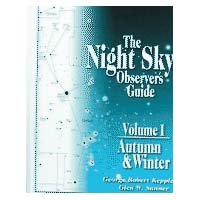Search -
The Night Sky Observer's Guide : Vol. 1
The Night Sky Observer's Guide Vol 1
Author:
Amateur astronomers today are exceptionally fortunate to be living in an era when high quality, and very large, optics are so affordable. In the first half of the 20th century the telescope deluxe for the amateur was the 6-inch refractor. However, such telescopes were so expensive that very few amateurs could afford them: the majority of starga... more »
Author:
Amateur astronomers today are exceptionally fortunate to be living in an era when high quality, and very large, optics are so affordable. In the first half of the 20th century the telescope deluxe for the amateur was the 6-inch refractor. However, such telescopes were so expensive that very few amateurs could afford them: the majority of starga... more »
ISBN-13: 9780943396583
ISBN-10: 0943396581
Publication Date: 10/1998
Rating: ?
ISBN-10: 0943396581
Publication Date: 10/1998
Rating: ?
0 stars, based on 0 rating
Genres:
- Science & Math >> Astronomy & Space Science >> Astronomy
- Science & Math >> Astronomy & Space Science >> Star-Gazing
- Science & Math >> General
- Engineering & Transportation >> Professional Science >> Astronomy >> Astronomy




